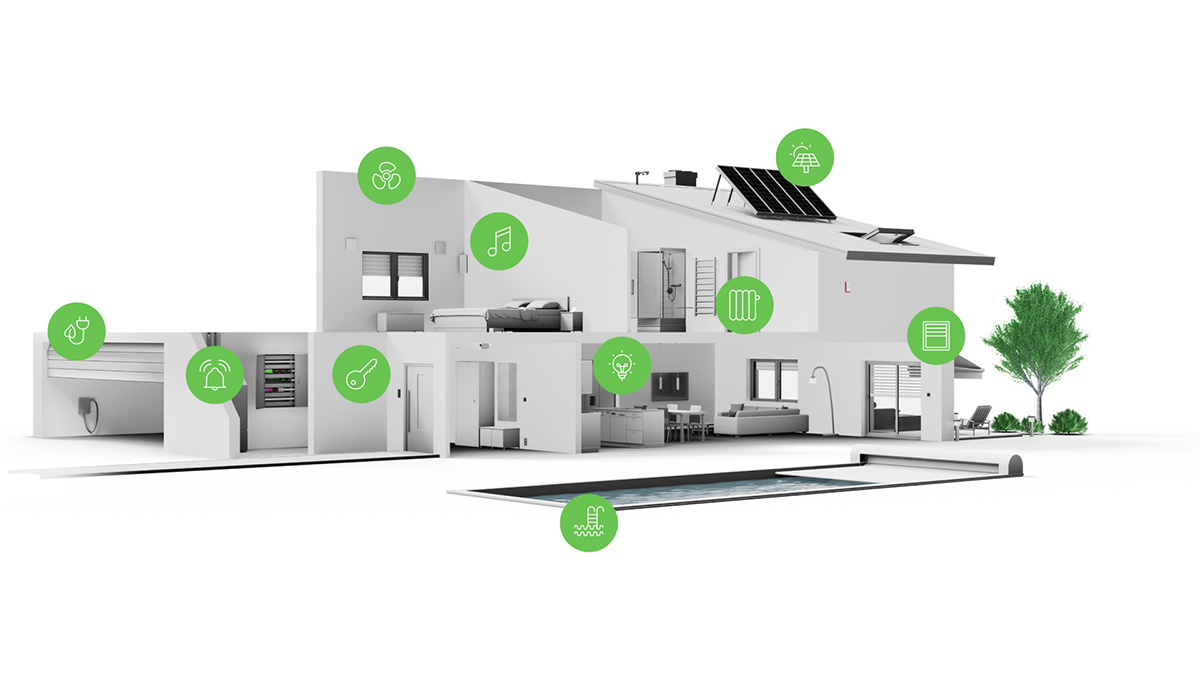
Smart homes showcase sophisticated, expertly integrating advanced technology into its custom design. Key features like automated lighting, adaptive climate control, and comprehensive security systems are illustrated, demonstrating a harmonious blend of innovation, comfort, and style.”
Harnessing Technology: Building a Smart Home with Custom Design
by Cedar Vista Homes
The modern world is witnessing an exciting shift in living spaces, where technology merges seamlessly with design to create smart homes. These homes go beyond aesthetics and comfort, offering homeowners convenience, safety, and energy efficiency. This article takes you through the journey of building a custom-designed smart home, integrating advanced technology for an elevated living experience.
Understanding Smart Homes
A smart home employs interconnected devices that provide automation capabilities across various systems within the house, such as lighting, heating, security, and entertainment. Homeowners control these devices through voice commands, mobile apps, or artificial intelligence-based automation. The end result is a home environment that adapts to your lifestyle, enhancing comfort and convenience while often reducing energy consumption.
Several elements define a smart home:
- Automation Systems: These systems control key functionalities like lighting, climate control, and security. They can automate daily tasks, like adjusting the thermostat or locking the doors.
- Connected Devices: Devices like smart speakers, smart TVs, and smart appliances communicate with each other, creating a synchronized network of devices.
- User Interface: This could be a smartphone app, voice-controlled assistant, or wall-mounted control panels that allow homeowners to control and monitor the home’s functionalities.
- Network: A strong, reliable home network is crucial for a smart home, as the devices communicate via Wi-Fi or other wireless communication protocols.
The Process of Building a Custom Smart Home
Building a smart home that also integrates custom home design requires detailed planning and execution:
- Understanding Your Needs: Identify your needs and the level of automation you require. Do you need basic automation, such as smart lights and locks, or more advanced features, such as automated blinds and a comprehensive security system?
- Planning the Design: Once your needs are clear, plan the design with an architect or a smart home consultant. Ensure the design accommodates the smart home components, such as wiring for connected devices and locations for control panels.
- Choosing Your Technology: Decide on the automation system, connected devices, and user interface. Remember, not all devices work with all systems, so compatibility is key.
- Installation: After the home design is finalized and construction is underway, the installation of smart home systems begins. This includes setting up the network, installing the automation system, and integrating the devices.
- Programming and Customizing: Once all the systems are installed, they need to be programmed. This step involves setting up automation rules, schedules, and customizing settings to fit your lifestyle.
- Testing and Adjustments: After programming, test all systems and make any necessary adjustments. This might involve fine-tuning motion sensor sensitivity or adjusting the schedule for automated lighting.
- Training: A smart home consultant should provide training on how to use the system and make changes to settings or schedules.
Final thoughts
A smart home that integrates technology into custom design represents the pinnacle of modern living. While building such a home requires thoughtful planning and coordination, the end result is a personalized space that works harmoniously to cater to your lifestyle. As technology continues to evolve, our homes will become smarter and more attuned to our needs, leading to an enhanced quality of life and a greener planet.


